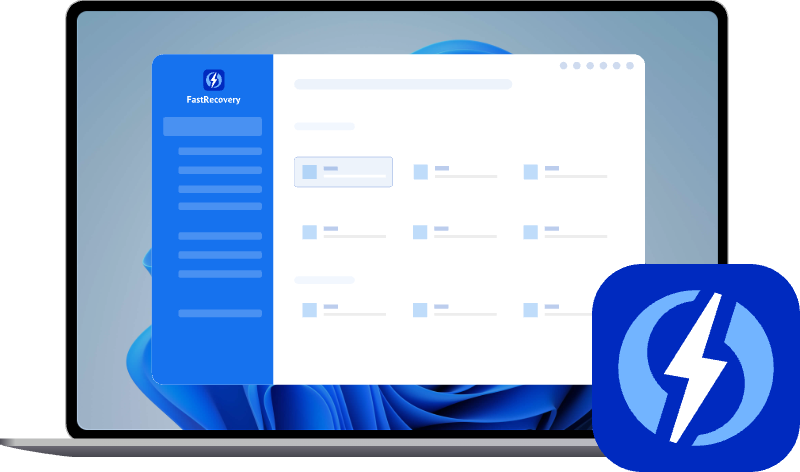Fix GPT Protective Partition and Recover Data
There are 4 methods to help you figure out how to remove GPT protective partition and recover data from it effortlessly.
No matter how careful you are, you can't avoid data loss on the GPT partition. The following are some scenarios:
▪ Users permanently deleted GPT partition.
▪ GPT partition is formatted.
▪ Virus/malware attack on GPT partition table.
▪ While switching the GPT partition to MBR, operation failure may lead to GPT partition data loss.
▪ The GPT partition is labeled as protective and you can't access it.
In this article, we'll talk about the GPT protective partition error and how to recover data from GPT protective partition easily and quickly.
About GPT protective partition error
GPT protective partition, as the name suggests, refers to a partition that is protected by a GUID partition table, and it can't be deleted, formatted, etc., in Disk Management. It prevents us from accessing data or managing partitions, leaving us distracted and helpless.
We don't want this to happen but sometimes it does, for two main reasons:
- #1: Compatibility issue - you connect a GPT disk to a 32-bit operating system. Your system cannot recognize or does not allow you to manage your GPT disk if you install it on a 32-bit system and show up as "GPT Protective Partition".
- #2: The partition table is corrupted. In this situation, your disk will show up as protective even if it's connected to a 64-bit operating system to protect it.
Access GPT protective partition and recover data
If you want to fix the GPT protective partition without losing data, the first step is to recover data from it using reliable data recovery software, such as AOMEI FastRecovery.

- Core technologies. Combines two scanning modes to automatically detect and then find all the recoverable data on the GPT protective partition, laying a basis for a high success rate.
- 200+ file types: It can recover documents (e.g. recover Word documents), photos, audio, videos, emails, compressed files, etc., without reducing the quality, up to 200+ formats.
- Shining highlights. It allows users to search or filter deleted files quickly, preview, and recover them while scanning if necessary.
- Recover deleted files in Windows 7, 8, 10, 11, etc., and Windows Server for free over 500MB.
Step 1. Download and install this AOMEI FastRecovery. Find the GPT protective partition where your data are stored. Hover the mouse over the drive and click Scan to scan.
Step 2. It will automatically start a Quick Scan & Deep Scan to find out the lost or deleted files and display them in the following window.
Step 3. You can choose to filter and select the desired data during the scanning process, you have 3 ways in the following. Or wait until the process completes and select all of them.
#1: Search your data: Type the file name to recover specific files or folders or extensions to recover certain data types.
#2: From their original path, such as Deleted Files, Recycle Bin, or Other Missing Files.
#3: Use the Filter feature: Click Filter and select Documents as file type. Then, type the file name or its extension to narrow it down.
Step 4. Select the desired files, and click on the Recover X files button. You can also double-click the files to preview them before recovering. Please select a new path to store the recovered files to prevent data overwriting.
Fix the "GPT Protective Partition" error
The GPT-protected partition is the problem between the operating system and disk partition, that is they are not compatible, or the partition table is damaged. Thus, the system cannot detect your hard drive and its partitions properly.
Here we will show you 2 proven ways to fix the "GPT Protective Partition" error.
Way 1. Remove GPT protective partition using DiskPart
You can directly clean the GPT protective partition using DiskPart if it's marked as "GPT Protective Partition" to make it accessible.
Step 1. Type cmd in the search box and select Run as administrator.
Step 2. In the command prompt window, type diskpart and press Enter to open this tool.
Step 3. Type the following commands to remove the GPT protective partition. Press Enter after each command.
- list disk
- select disk # (# is the number of the disk marked as"GPT Protective Partition")
- clean
After removing the"GPT Protective Partition" error, you can choose to initialize disk and repartition itto save data, such as documents, images, videos, etc.
Way 2. Convert GPT partition to MBR using partition manager
You can also convert the GPT partition to MBR, which is fully compatible with all operating systems, such as Windows 11/10/8.1/8/7/Vista/XP, making your drive accessible.
Now, I will recommend a safe converter, AOMEI Partition Assistant. It can convert GPT to MBR, or vice versa, and will not cause data loss during the conversion. You can free download it to have a try!
Step 1. Install and launch this tool GPT2MBR converter. Then, find the disk that holds GPT Protective Partition, right-click it, and select Convert to MBR Disk.
Step 2. Select the current disk and click OK to continue when the new windows pop up.
Step 3. In the main interface, click Apply > Proceed to convert GPT to MBR without losing data.
Way 3. Recover corrupted partition table using software
AOMEI Partition Assistant is also a partition recovery software in Windows 7, 8, 10, and 11. If your problem is a corrupted partition, you can choose to delete it and then rebuild a partition table in good status with the help of its backup copy.
Step 1. Launch AOMEI Partition Assistant. Choose Recover > Partition Recovery and select the disk including the corrupted partition table. Click Next.
Step 2. Select Full Search and click Next.
Step 3. Then, all the deleted partitions will be shown in the list box. Select the one containing the partition table and click Proceed to start the partition recovery process.
Wrapping up
This article talks about how to remove GPT protective partition and recover data in different ways. So you can easily gain access to your disk and data.
To prevent the loss of GPT partitions and files, you can use AOMEI Backupper, a high-end backup tool. It allows you to set a time to automatically backup your data, which greatly saves your energy.
FAQs
1. How to recover GPT partition data using File History?
File History is a useful built-in feature of Windows, and it is used to create automatic local backups of user data. By the way, you must enable it before you lose data.
- Go to Control Panel > System and Security> File History. Then, tap Restore your files with File History.
- Find and right-click the Restore personal files on the left list.
- The deleted file will appear on your interface. Click the Restore button to recover data from GPT partition.
2. How to recover GPT partition data using Windows backup?
Backup and Restore of Windows is another excellent backup tool, which can be used to backup systems or data. If you backup your data by using it, you can follow the steps below to recover them.
- Launch the Windows menu and choose Control Panel > Click System and Security > Backup and Restore (Windows 7).
- Click on the Restore my files button on this page.
- Search or browse your files or folders.
- Select a new location to save the recovered files. Click the Restore button to get data back from the GPT partition.
3. How to recover GPT partition data without backup?
If you don't have a backup image, recovering GPT partition data using software like AOMEI Partition Assistant Professional will be a good choice. It supports recovering deleted or lost partitions as well as data within it.
- Download and install AOMEI Partition Assistant Professional. Select Recover > Partition Recovery to retrieve your partition. Then, click Next.
- Choose Fast Search and click Next.
- It will show you all deleted/lost partitions. You can select the one that you want to recover and then click on Proceed.
- When the process is completed, the Congratulations window will pop up. Click Finish. Then you can go to File Explorer to check the deleted partitions and data.
4. What is the difference between GPT and MBR?
GPT is a new type of disk mode, which is short for GUID Partition Table. Compared with our commonly utilized MBR disk, GPT is steadier and has a more grounded self-amendment capacity.
MBR can only recognize space around 2TB, but GPT is more than 2TB. Apart from that, the quantity of GPT partitions is not restricted as well, it allows users to create up to 128 partitions on a GPT disk in Windows.
5. Does GPT keep a backup copy of the GPT table?
Yes, GUID Partition Tables (GPT) store two GPT Header structures on a device, one primary and one backup. The primary GPT Header is located in LBA 1, which is the second logical block, and the backup GPT Header is located in the device's last LBA. The GPT Header has a pointer to the partition table, which is usually located at LBA 2.

